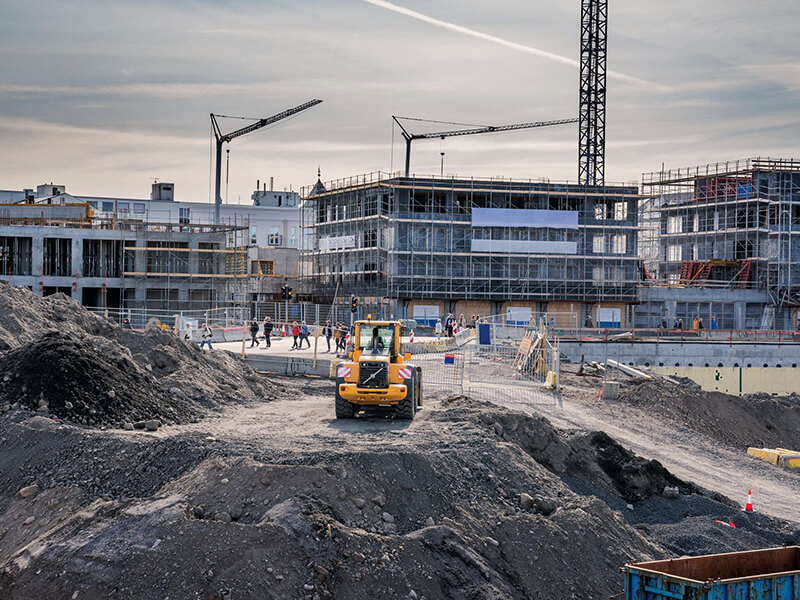
Construction is a constantly evolving field, adapting to the needs of people, the market, and the environment itself. An increasingly important issue in this field is building sustainability. In light of this, a trend has been gaining momentum in many projects: the construction of green buildings.
The expectation is that more and more buildings will follow this model in the coming years, even if only partially. Considering the significant impact that some properties can have on nature and resource consumption, it is essential to create projects that are more environmentally friendly and promote sustainability.
Follow and better understand what it is green building, its advantages and its importance for sustainability in civil construction.
Large buildings often have a significant environmental impact, both in their construction and maintenance, and in their daily use. Commercial buildings, in particular, tend to have the most notable impact. Therefore, it's crucial to find ways to make these buildings more environmentally friendly.
THE green building, also called green construction, emerges as one such alternative. This is the name given to civil construction projects designed to cause minimal environmental impact at all stages, from green construction to the end of its use.
New buildings are constantly being constructed, consuming more resources in the short and long term. The use of more sustainable practices is essential for maintaining these properties and achieving a balanced use of natural resources.
Many of these buildings have facades or roofs covered in plants or moss. This isn't mandatory, but these plants can also be used as part of a system to harvest water, reflect sunlight, purify the air, and so on.
To determine whether a building qualifies for a certification green building, he must get a LEED Seal (Leadership in Energy and Environmental Design), issued by GBCI (Green Building Council Inc.). This institution evaluates the project based on a series of sustainability criteria, creating a score ranging from 0 to 110 points.
For a building to receive the seal, it must score at least 40 points on this scale. The evaluation takes into account several aspects of the project, from the use of sustainable materials in its construction to the efficient use of resources in day-to-day operations. As steel recycling It is efficient and has low environmental impact, for example, it is a material that is highly favored in sustainable projects.
Design a green building It's a little different from a traditional project. It requires some modifications and a larger initial investment, but it yields a much higher return in the long run.
Check out some of the main advantages of green buildings in the civil construction today.
As mentioned, the main goal is to ensure that the final project is as sustainable as possible. To clarify, something is considered "sustainable" when it can be maintained indefinitely, without the risk of the cycle being interrupted. The idea is to use renewable resources, creating this continuous cycle. Any consumed or discarded resources can be returned to nature later.
This takes into account the entire lifespan of the building. In construction, methods and civil construction materials with a lower environmental impact. In everyday life, the building must also minimize potential damage to nature. And when abandoned, renovated, or demolished, it must also be possible to reuse these resources.
The principles costs In the day-to-day running of a building, especially a commercial one, water and electricity are essential. Both are necessary resources for its operation, but they can also have a significant impact on the environment. Even though they are renewable resources, it's important to be careful with their use, as they are needed in many other areas of society.
Therefore, it is essential that a civil construction project also takes into account the use of these resources. green building, a series of techniques are used and technologies to minimize daily water and energy consumption. In addition to being more environmentally friendly, this makes the building more economical in the long run.
Many of the measures that make a building sustainable also help make it more comfortable for its residents or users. For example, these buildings often have a more sophisticated climate control system, with filters on the windows to minimize solar radiation. This naturally reduces the internal temperature and minimizes the need for air conditioning.
If the building incorporates some natural greenery into its structure, it also helps purify the air. This is crucial for maintaining the health and well-being of everyone inside and around it. It's enough that these plants are well cared for throughout the building's lifespan.
Another advantage that many green buildings present is in its appearance. The facade filled with plants is a good example, easily highlighting the property within the urban space, contrasting with the concrete, steel and glass used in the structure. This alone is enough to make the project more attractive to many buyers.
It's true that not everyone incorporates plants into their facades, but that doesn't mean their design suffers. Still, it's possible to include other aspects, such as solar panels, reflective windows, and more.
Another important issue to consider when designing a project is how these techniques affect the value of the final product. This is a significant issue for investors and contractors.
THE green building can be very useful in increasing the value of the property after its completion. Considering that the initial investment leads to reduced long-term costs, especially for water and electricity, it's no surprise that the project appreciates over time.
Now you know what green building is and you know more about green building and the importance of these practices for the sustainability of urban spaces. In the future, the trend is for more projects to follow this format and continue to innovate on it.
Did you like our article? Then read more on blog and share this content on your social networks!